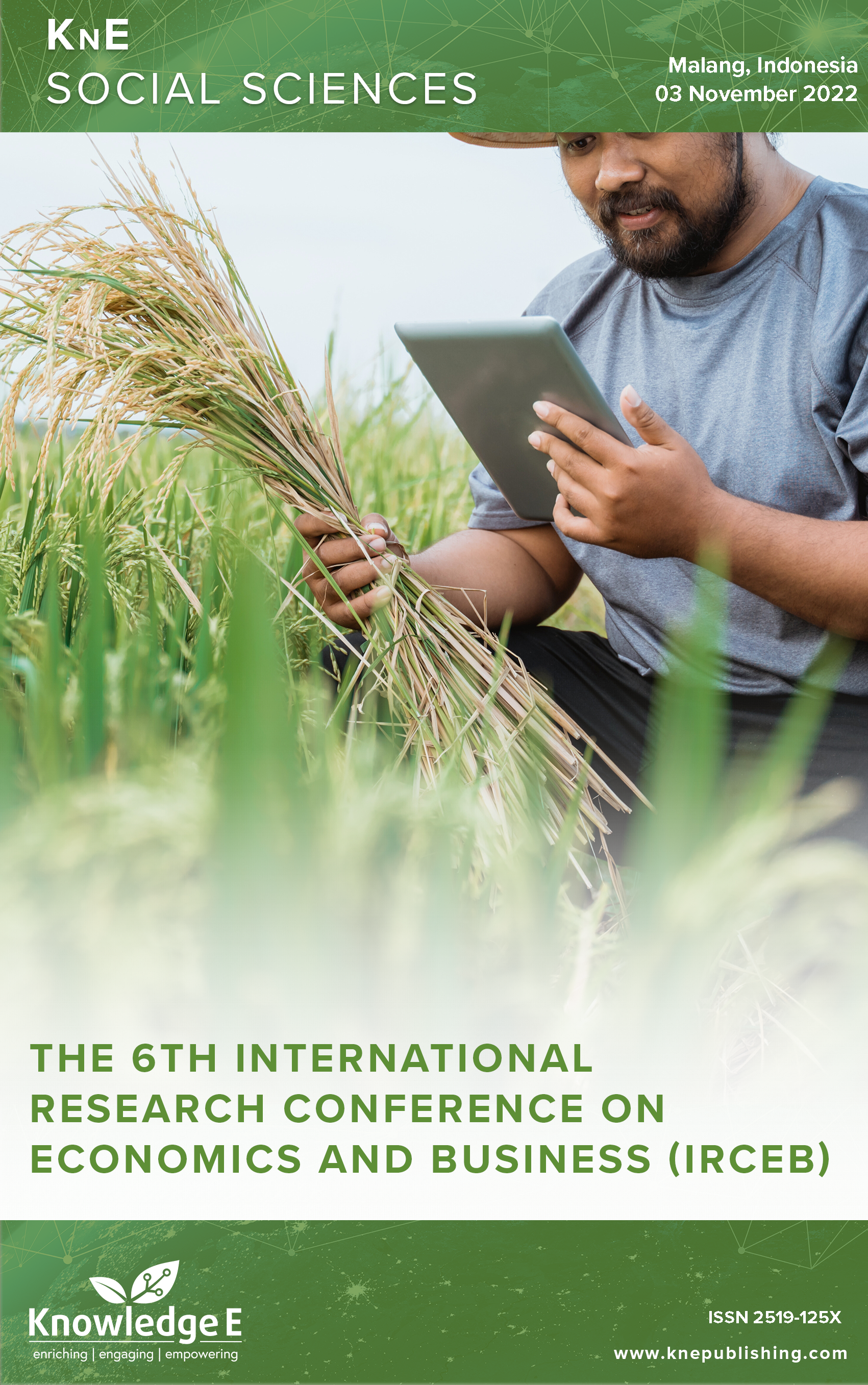The Effect of GDP, FDI, and Inflation to Trade Balance in 12 APEC Countries
DOI:
https://doi.org/10.18502/kss.v9i4.15110Abstract
This research analyzes the factors that affect the trade balance in 12 APEC countries because trade balance is one of the important factors for economic growth. The level of prosperity and economy of a country can be measured by its active trading activities. This activity can be a source of income for countries. So, it can be said that the strength of a country’s economy is its trade. Through trade, a country can establish diplomatic relations with other countries. This research uses panel data model with trade balance as a dependent variable, and gross domestic product (GDP), foreign direct investment (FDI), and inflation as independent variables. This research uses data from 2011-2020. The result is that GDP does not have significance with the trade balance, FDI has a positive significance for trade balance, and inflation has a negative significance with trade balance.
Keywords: APEC, data panel, trade balance
References
Pujoalwanto B. Indonesian economy, historical, theoretical and empirical review. Jakarta: Graha Ilmu; 2014.
Rahmawati D. Effect of exchange rate and GDP on Indonesia’s trade balance 1980- 2012. Economics Development Analysis Journal; 2014.
Weerasinghe E, Perera R. Determinants of balance of trade in the Sri Lankan Economy. International Journal of Trade. Economics and Finance. 2019;10(1):17–24. DOI: https://doi.org/10.18178/ijtef.2019.10.1.631
Fitrah and Luthfiyah. Research methods: Qualitative research, classroom action and case studies. CV Jejak; 2017.
Duasa J. Determinants of Malaysian trade balance an ARDL Bound Testing Approach. Glob Econ Rev. 2007;28(3):21–40. DOI: https://doi.org/10.1080/12265080701217405
Weiss J. Export growth and industrial policy: Lesson from the East Asian Miracle Experience. ADB Institute Discussion Paper. 2005. 26. DOI: https://doi.org/10.18235/0006860
Azizah L, Tan S, Emilia E. Estimasi Model Neraca Perdagangan Indonesia dalam Periode 1998-2017. E-Journal Perdagangan Industri Dan Moneter. 2019;7(3):123–136. DOI: https://doi.org/10.22437/pim.v7i3.7206
Darwin M, Mamondol MR, Sormin SA, Nurhayati Y. Research methods quantitative approach. Bandung: Indonesian Science Media; 2021.
Ginting M. The effect of foreign investment on the ASEAN-6 Trade. Center for the Study, Data and Information Processing (P3DI). Jakarta Economic and Public Policy Sector; 2015.
Ginting M. The development of the trade balance and the factors affecting it. Center for the Study, Data and Information Processing (P3DI). Jakarta Economic and Public Policy Sector; 2014.
Silvia MA, Rahmayani. Investing in the whirlpool of the pandemic: Reading the gap in the national economic recovery in the new normal era. National Seminar of the Faculty of Economics Tidar University. 2021;25-32.
Suparmoko M. Introduction to Macroeconomics. Edition Two. First Print. BPFE Yogya. 1991.
Nancy N, Maria F. Analysis of the effect of exchange rate and inflation on the trade balance in Indonesia. Vision of Social Sciences and Humanities. 2020;1(1).
Todaro P, Smith C (Haris Munandar Puji A, translator). Economic development. 9th ed. Jakarta: Erlangga; 2006.
Puri, Amaliah. The effect of inflation, interest rates, GDP, exchange rates and economic crisis on Indonesia’s trade balance for the 1995-2017 Period. 2021;1(1).
Zulfikar R. Estimation model and selection method of panel data regression: An overview of common effect, fixed effect, and random effect model. Center for Open Science; 2019. DOI: https://doi.org/10.31227/osf.io/9qe2b
Aminda S. Analysis of the effect of inflation and rupiah exchange rate on Indonesia’s Trade Balance in 2005-2015. 2019.
Chaisrisawatsuk S, Chaisrisawatsuk W. Import, export and foreign direct investment interactions and their effects. Asia-Pasific Research and Training Network on Trade Working. 2007;47.
Soelistyo. International economics volume I: International trade theory. Edition Two. Fourth Printing. 1989.
Tambunan T. Globalization and international trade. Jakarta: Ghalia Indonesia; 2004.
Acemoglu D, Laibson D, List JA (Mulyana A, editor). Makroekonomi. Penerbit Erlangga; 2019.
Falk M. Determinants of the trade balance in industrialized countries (No. 013). FIWResearch Reports. 2008.
Salvatore D. International Economics. Prentice-Hall. 2007.

